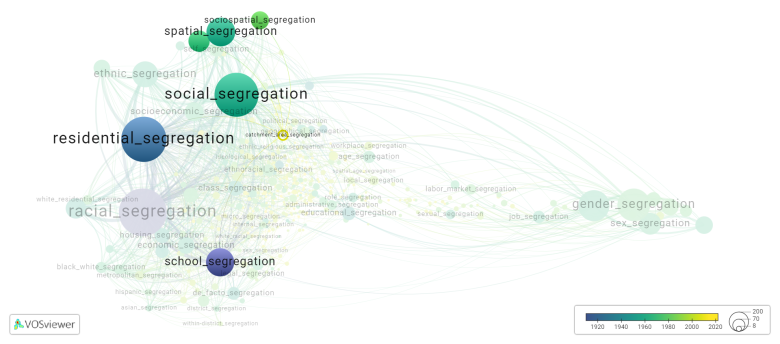Catchment area segregation
Date and country of first publication[1]
2017
Australia
Definition
Catchment area segregation refers to the practice of dividing a geographic area into smaller sections or zones based on certain criteria, such as demographics or socio-economic status. This segregation can lead to disparities in the provision of resources and services, such as education or healthcare, within different catchment areas. It can also contribute to the perpetuation of inequality and social exclusion within a community. Efforts to address catchment area segregation may involve policies aimed at promoting equitable access to services and opportunities for all residents, regardless of where they live.
See also
Related segregation forms
Catchment area segregation is frequently discussed in the literature with the following segregation forms:
social segregation, residential segregation, urban segregation, school segregation, spatial segregation, sociospatial segregation

This visualization is based on the study The Multidisciplinary Landscape of Segregation Research.
For the complete network of interrelated segregation forms, please refer to:
References
Notes
- ↑ Date and country of first publication as informed by the Scopus database (December 2023).
At its current state, this definition has been generated by a Large Language Model (LLM) so far without review by an independent researcher or a member of the curating team of segregation experts that keep the Segregation Wiki online. While we strive for accuracy, we cannot guarantee its reliability, completeness and timeliness. Please use this content with caution and verify information as needed. Also, feel free to improve on the definition as you see fit, including the use of references and other informational resources. We value your input in enhancing the quality and accuracy of the definitions of segregation forms collectively offered in the Segregation Wiki ©.
Catchment area segregation appears in the following literature
Rowe E.E., Lubienski C. (2017). Shopping for schools or shopping for peers: public schools and catchment area segregation. Journal of Education Policy, 32(3), 340-356. Routledge.https://doi.org/10.1080/02680939.2016.1263363
Bernelius V., Vilkama K. (2019). Pupils on the move: School catchment area segregation and residential mobility of urban families. Urban Studies, 56(15), 3095-3116. SAGE Publications Ltd.https://doi.org/10.1177/0042098019848999
